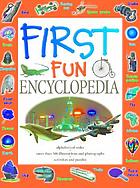Use Newsela for Non-Fiction ReadingI have been using Newsela for a long time. I use it to assign articles to my students that supplement what we're doing in class. For example, for a Ninth Grade English Shakespeare unit I have kids read about Shakespeare in the Park or after talking about whether or not "video games rot your mind" I have them read an opinion piece on the subject before they write their own essay.
Go Further With Teacher-created Text SetsA really powerful tool on Newsela is the ability to create text sets. I teach a series of "Philosophy in the Classroom" units that I developed with middle and high school students at my school. We read Plato and Nietzsche in class but I want to connect the abstract ideas of philosophers to current and relevant events going on in our society today. Newsela makes that possible. Here is a text set I recently made for my students that I have paired up with my unit on Justice.
Newsela Text Set: Philosophy in the High School Classroom: "The Ring of Gyges"
Essential Mystery: Why should I be a good person?
I based the Newsela Text Set On My Philosophy in the Classroom Lesson
Supporting questions:
Should I be a good person even if I know I can get away with being bad?
Is being a good person in of itself a good thing? Why do those who do bad things not only sometimes get away with it but seem to benefit from their ill deeds while those who do good don't often prosper nor get as much recognition for the good they do?
Student/ Teacher Instructions:
Why be good? The texts in this set contribute to an overarching moral question first brought out by Plato in his book, The Republic. Plato's young student Glaucon complains to Socrates that good people never seem to benefit from their good deeds, while bad people who do bad deeds not only profit from it but seem to be better off than good people. So why be good at all?
- Pre-Reading Assignment: Before going further watch the following video “The Myth of Gyges”. Copy and paste the link: https://youtu.be/4qjGp6TWqe4
- Optional. Read the primary source material from The Republic. Copy and paste the link: http://sites.wofford.edu/kaycd/Plato/.
- Choose THREE compelling stories from this text set to read and to annotate. Respond to all prompts in YELLOW. These are my questions to you.
- Be both Glaucon and Socrates as you read. Highlight in RED ideas in the stories that support Glaucon. Highlight in GREEN views that support Socrates' view.
- Take the reading comprehension quizzes for the three stories you selected.
- Prepare the writing prompt for the article that you thought was the most compelling. Read the prompt carefully.
In class, be ready to share your annotations for the articles you selected. You will be paired with different students to discuss the ideas of each article. Your grade for this assignment is a combination of your quiz scores (20%), your annotations and appropriate highlights (20%), group participation (30%), and finally, your writing prompt (30%).
Extension Resources:
Content Areas: English Language Arts, Social Studies, Humanities, Civics
Skills Practiced: This text set and its activities conform to the following Common Core Standards:
CCSS.ELA-LITERACY.RL.9-10.2 - Determine a theme or central idea of a text and analyze in detail its development over the course of the text, including how it emerges and is shaped and refined by specific details; provide an objective summary of the text.
CCSS.ELA-Literacy.CCRA.L.6 - Acquire and use accurately a range of general academic and domain-specific words and phrases sufficient for reading, writing, speaking, and listening at the college and career readiness level; demonstrate independence in gathering vocabulary knowledge when encountering an unknown term important to comprehension or expression.
CCSS.ELA-Literacy.CCRA.L.5 - Demonstrate understanding of figurative language, word relationships, and nuances in word meanings.
Estimated Time: Three 45-minute class periods.
Extension Resources:
- Primary Source "Ring of Gyges" Kay, Charles D. Wofford College. “Plato”. N.d. <http://sites.wofford.edu/kaycd/Plato/>. Internet Resource.
- Go deeper with this lecture from Yale University professor Tamar Szabó Gendler on "The Ring of Gyges". https://oyc.yale.edu/philosophy/phil-181/lecture-2
- Plato, and Benjamin Jowett. The Republic: The Complete and Unabridged Jowett Translation. New York: Vintage Books, 1991.
Content Areas: English Language Arts, Social Studies, Humanities, Civics
Skills Practiced: This text set and its activities conform to the following Common Core Standards:
CCSS.ELA-LITERACY.RL.9-10.2 - Determine a theme or central idea of a text and analyze in detail its development over the course of the text, including how it emerges and is shaped and refined by specific details; provide an objective summary of the text.
CCSS.ELA-Literacy.CCRA.L.6 - Acquire and use accurately a range of general academic and domain-specific words and phrases sufficient for reading, writing, speaking, and listening at the college and career readiness level; demonstrate independence in gathering vocabulary knowledge when encountering an unknown term important to comprehension or expression.
CCSS.ELA-Literacy.CCRA.L.5 - Demonstrate understanding of figurative language, word relationships, and nuances in word meanings.
Estimated Time: Three 45-minute class periods.



